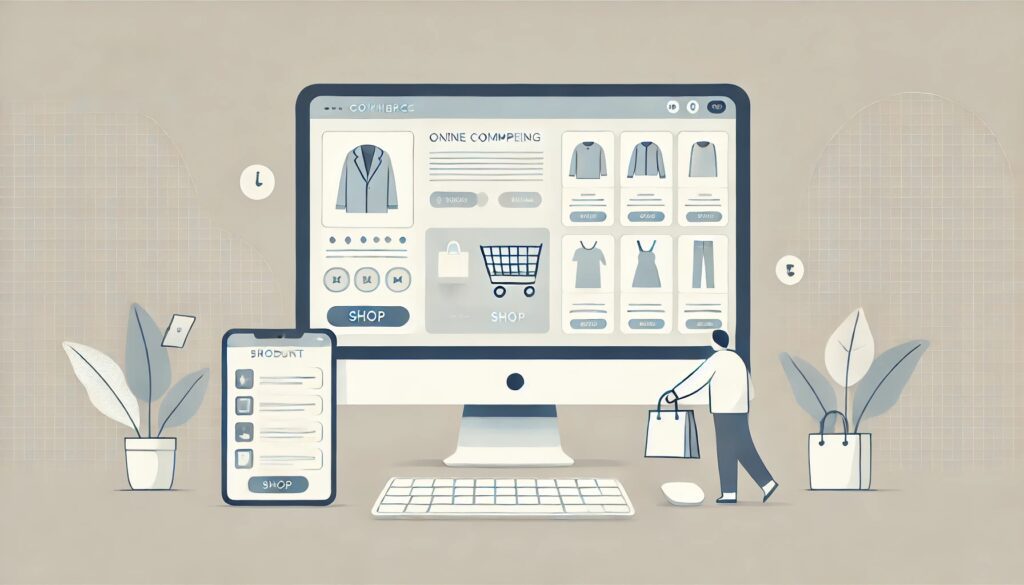
AI-driven pricing systems adjust costs based on user behavior. Staying savvy can save you money. Dynamic pricing, used by e-commerce platforms, airlines, and even ride-share apps, tailors prices based on demand, browsing history, and more.
Here’s how to level the playing field and keep extra dollars in your pocket.
Understanding AI-Powered Dynamic Pricing
What is Dynamic Pricing?
Dynamic pricing adjusts prices in real time, reacting to factors like supply, demand, or your location. Retailers use AI algorithms to fine-tune these adjustments, ensuring maximum profit. While this benefits businesses, consumers often end up overpaying.
For example, you might notice airline tickets spiking after multiple searches. That’s AI recognizing your interest and pushing prices higher.
Industries Using AI for Pricing
From streaming services to hotel bookings, dynamic pricing is everywhere. Retail giants like Amazon use machine learning models to tweak product prices several times daily. Even gas stations have embraced this practice, tailoring costs to local demand.
To beat this, it’s vital to recognize when and where these tactics are at play.
How AI Tracks and Influences Your Spending
Cookies and Tracking Tools
AI systems rely on your digital footprint to predict your willingness to pay. Cookies track your browsing history, location, and purchasing habits, feeding data into pricing models.
Ever seen a price jump after returning to a product page? Clearing your cookies might prevent this sneaky practice.
Geo-Targeted Pricing
Your location impacts what price you see. Wealthier zip codes often get higher quotes for the same services. Some platforms even analyze local buying patterns to optimize pricing.
Use a VPN to mask your location, potentially unlocking fairer deals.
Tips for Outsmarting Dynamic Pricing

Leverage Incognito Mode
Switching to incognito browsing can prevent retailers from tracking your activity. This is an easy way to avoid inflated prices based on your search history.
Shop at Off-Peak Times
Dynamic pricing relies on demand patterns. Shopping late at night or mid-week can sometimes trigger lower price points due to reduced demand.
Experiment with timing your purchases for better savings.
Tools to Help You Find Fair Prices
Price-Tracking Extensions
Chrome extensions like Honey or CamelCamelCamel monitor price history, showing whether a deal is genuine. These tools empower you to make informed decisions instead of relying on fluctuating prices.
AI Price Alerts
Ironically, AI can help beat AI. Services like Hopper or Skyscanner send price alerts when costs drop, ensuring you never overpay for flights or hotels.
These strategies put the control back in your hands.

Behavioral Tricks to Avoid Overpaying
Avoid Repeated Searches
Repeatedly checking the same product or service signals interest to pricing algorithms. This could prompt price increases. Instead, try:
- Searching for products on different devices.
- Clearing your browser’s cache and cookies.
- Using a guest account rather than logging in.
This limits the data retailers gather about you.
Compare Across Platforms
Retailers often price products differently across apps, mobile websites, and desktop versions. Sometimes, mobile apps offer exclusive deals, or websites present discounts unavailable elsewhere.
Cross-check to ensure you’re getting the best rate.
When Patience Pays: Timing Your Purchases

Wait for Price Drops
Dynamic pricing systems often drop prices when demand slows. For non-urgent purchases, monitor prices over a few days to identify trends.
Seasonal sales, clearance events, and even specific times of the month (like end-of-quarter clearouts) often yield lower prices.
Use the 24-Hour Rule
When tempted to buy something, especially at a high price, pause for 24 hours. Often, prices will adjust, and you might even receive retargeted discounts to entice your return.
The Future of Dynamic Pricing and Consumer Tactics
AI Continues to Evolve
AI pricing algorithms will only grow smarter, learning from massive datasets to personalize offers even more. However, consumer awareness is rising, and tools to counteract these tactics are improving.
Staying informed and adaptable is your best weapon against these ever-changing strategies.
Advocate for Transparency
Push for pricing transparency by supporting brands that openly disclose their pricing models. Fair trade-off policies—like those outlining when and why prices change—encourage ethical AI usage.
Conclusion: Outsmarting AI for Fair Prices
Dynamic pricing isn’t going anywhere, but consumers have the tools and knowledge to fight back. With the right mix of strategies, tools, and timing, you can outmaneuver even the smartest AI systems and avoid falling into their traps. Remember, the power to shop smarter is always within reach.
FAQs
Is using incognito mode enough to prevent price hikes?
Incognito mode can help, but it’s not a foolproof solution. While it stops cookies from tracking your history, IP-based tracking or your logged-in account can still reveal patterns to pricing algorithms.
Example: If you log into Amazon while in incognito, it may still adjust prices based on your purchase history.
Can a VPN really make prices lower?
Yes, a VPN can sometimes help by masking your location. For example, streaming services like Netflix or flight booking platforms may display different prices based on your country. Changing your IP address to a location with lower demand can uncover discounts.
Try comparing the price of a flight when connected through a US-based server versus one in another region.
What’s the benefit of price-tracking tools?
Price-tracking extensions like Honey, Rakuten, or CamelCamelCamel reveal price trends and history. This lets you see if a sale is genuine or just an illusion.
Example: A “50% off” tag might seem appealing, but these tools can show if the original price was inflated before the sale.
How can I avoid geo-targeted pricing without a VPN?
Use public Wi-Fi or shop while traveling in areas with lower average income levels. For example, some retailers raise prices for affluent zip codes, so purchasing from a café in a less expensive neighborhood may yield better deals.
If you’re on mobile, turning off location tracking in app settings can also help reduce price manipulation.
Are there risks to waiting for a better price?
Yes, especially for high-demand items. While waiting can lead to price drops, it can also mean items selling out.
Example: A concert ticket’s price might drop as the event nears, but limited seating could mean losing your chance to attend entirely.
Balancing patience with urgency is key.
Do loyalty programs affect dynamic pricing?
Sometimes. Loyalty programs can be a double-edged sword. While they offer discounts, businesses might tailor pricing to loyal customers, assuming they’ll pay more.
Example: An exclusive email discount might appear generous, but compare prices on third-party platforms to ensure it’s the best deal.
Are there ethical concerns with AI dynamic pricing?
Yes, as it can exploit consumer behavior or penalize certain groups. For instance, low-income individuals might face higher markups during peak demand because they can’t shop during off-hours.
Some retailers are working toward more transparent systems, but awareness is critical to avoid falling into these traps.
Can airlines charge different prices for the same flight based on search patterns?
Absolutely. Airlines often track your search history to gauge interest. If you repeatedly search for a flight to Los Angeles, the price may rise as AI detects urgency.
To counter this, use tools like Skyscanner in incognito mode or clear your cookies between searches. Alternatively, check prices on aggregator sites that don’t share your data with airlines directly.
How do retailers use purchase history to manipulate pricing?
Retailers analyze your past spending habits to estimate your willingness to pay. If you consistently buy premium products, AI might display fewer discounts or higher prices for similar items.
Example: A user who frequently purchases high-end tech gadgets might see fewer sales on those products than someone shopping for budget options.
Avoid logging in until checkout to minimize this tracking.
Why do prices change so quickly on Amazon?
Amazon uses dynamic pricing to stay competitive. Its algorithms analyze millions of competitors’ prices, stock levels, and demand trends. A product’s price could change multiple times a day depending on these factors.
Example: If a rival offers a sale on a popular phone, Amazon’s AI might adjust its price to undercut the competition within hours.
Using price-tracking tools like CamelCamelCamel can help you identify the best time to buy.
Do payment methods influence dynamic pricing?
In some cases, yes. Retailers may show slightly higher prices for users paying with credit cards, as they assume these customers have more disposable income. Similarly, customers using premium services like PayPal Credit might face adjusted pricing.
Example: When booking travel, check whether switching to a different payment method, such as direct bank transfer, results in lower fees or prices.
Are there specific times when dynamic pricing is less aggressive?
Yes, during low-demand periods or off-season times. Many platforms use historical data to predict when fewer people are shopping and lower prices accordingly.
Example: Booking hotels on weekdays instead of weekends often results in significant savings because fewer travelers are booking midweek stays.
Use apps like Hopper to identify the cheapest days for flights or accommodations.
How can I tell if a sale is fake?
Many retailers use inflated “original prices” to make discounts seem more attractive. Tools like Honey or Keepa show price history, helping you verify if an item was genuinely reduced.
Example: A $100 coffee maker marked down to $75 might seem like a deal until you discover it was $70 last week.
Always cross-check discounts with multiple platforms.
Can ride-hailing apps like Uber adjust prices unfairly?
Yes, ride-hailing apps use surge pricing to charge higher fares during peak times or in specific locations. For instance, after a concert or during rush hour, prices may double or triple.
To avoid this, check competitor apps like Lyft, wait a few minutes for demand to drop, or walk a short distance to a lower-demand area.
Do memberships like Amazon Prime or Costco impact pricing?
Memberships can offer exclusive discounts but may also influence how prices are displayed to you. Prime members, for instance, might see certain deals unavailable to non-members but could also be nudged toward higher-priced options due to assumed loyalty.
Example: A Prime member might receive more frequent recommendations for premium versions of products instead of budget alternatives.
Balance the membership benefits against your shopping habits to determine if it’s worth it.
Is there a way to negotiate prices in the age of AI?
While traditional negotiation isn’t possible with AI-driven platforms, there are indirect ways to lower prices:
- Use competitor price-matching policies.
- Contact customer service to ask about discounts, especially for large purchases.
- Add items to your cart and abandon them to trigger follow-up discount emails from retailers trying to close the sale.
Example: Many online stores send a 10-20% discount code after you leave items in your cart for 24-48 hours.
Resources
Price Tracking and Comparison Tools
1. CamelCamelCamel
Tracks the price history of Amazon products and alerts you when prices drop. Use it to verify whether a sale is genuine.
Visit CamelCamelCamel
2. Honey
A browser extension that automatically applies coupon codes and shows price history at checkout.
Visit Honey
3. Keepa
Provides detailed Amazon price tracking, including trends and fluctuations over time. Perfect for identifying patterns.
Visit Keepa
VPN Services for Geo-Location Pricing
1. NordVPN
Masks your IP address and lets you shop from different virtual locations to access lower prices.
Visit NordVPN
2. ExpressVPN
Highly secure and fast, ideal for unlocking regional pricing differences on flights, hotels, and streaming services.
Visit ExpressVPN
3. ProtonVPN
Offers free and paid options to anonymize your location, helping to counter geo-targeted price hikes.
Visit ProtonVPN
Travel-Specific Tools
1. Hopper
An app that predicts airfare and hotel price trends, sending alerts when prices drop.
Visit Hopper
2. Skyscanner
Compares flight prices across multiple airlines and alerts you to the best deals globally.
Visit Skyscanner
3. Kayak
Aggregates flight, hotel, and car rental prices, offering flexible search options and predictions on when to book.
Visit Kayak
Browser Extensions to Optimize Shopping
1. Rakuten
Earn cash back on purchases and access exclusive deals from partnered retailers.
Visit Rakuten
2. Invisible Hand
Shows lower prices for the same product across different retailers while you shop online.
Visit Invisible Hand
3. Capital One Shopping (formerly Wikibuy)
Finds coupons and better prices from other sellers in real time.
Visit Capital One Shopping





